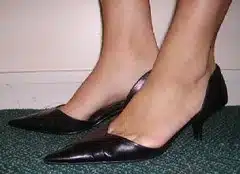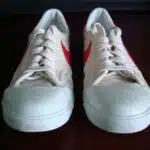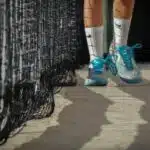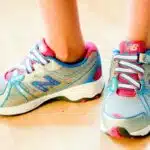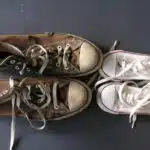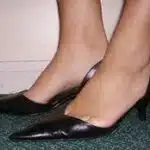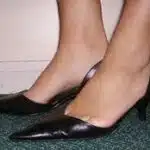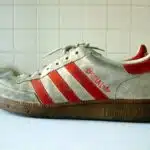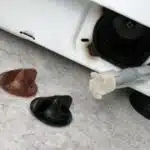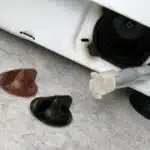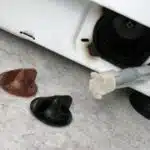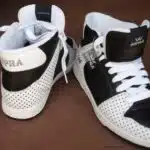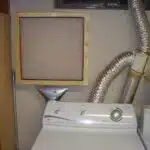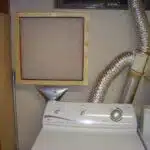As a shoe cleaning expert, I am often asked about the most efficient and effective ways to clean shoes. One common question is whether shoes can be washed in a washing machine or if they should only be washed by hand. The answer to this question depends on several factors, including the type of shoe material and the level of dirt and grime that needs to be removed.
In this article, we will explore both methods of cleaning shoes – washing them in a washing machine and washing them by hand. We will discuss the benefits and drawbacks of each method, as well as provide step-by-step instructions for achieving optimal results. By the end of this article, you will have all the knowledge you need to confidently clean your shoes and keep them looking their best for years to come.
Understanding Shoe Materials
As a shoe cleaning expert, it is essential to understand the construction of different types of shoes before attempting to clean them. Shoes are made with various materials such as leather, suede, canvas, and mesh. Each material requires a specific cleaning technique that ensures that it maintains its quality and longevity. Furthermore, certain materials may be more prone to damage when exposed to water or harsh chemicals.
When it comes to choosing the right shoe care products, one must consider the material of the shoe. Leather shoes require conditioners and polishes that prevent cracking and dryness. Suede shoes need special brushes and sprays that protect against water damage and stains. Canvas and mesh shoes can be cleaned with mild soap and water but need protection from dirt and grime buildup.
By understanding the construction of your shoes and choosing the appropriate care products, you can ensure that your footwear stays in top condition for longer. Now that we have covered the basics of shoe materials let us move on to identifying stains and dirt on our footwear.
Identifying Stains And Dirt
Identifying tough stains and removing stubborn dirt from your shoes is an essential step in the cleaning process. It is crucial to identify the type of stain before attempting to clean it, as different stains require different treatment methods. For instance, grease or oil stains require a degreaser, while mud or grass stains need a pre-treatment with a stain remover.
To identify tough stains on your shoes, start by examining them closely. Use a damp cloth to wipe away any dirt or debris that may be covering the stain. Once you have located the stain, take note of its color and texture. This information will help you determine what kind of stain it is and how to remove it effectively.
Removing stubborn dirt from your shoes requires patience and persistence. Begin by gently brushing off any loose dirt or debris with a soft-bristled brush. Next, use a mild detergent solution and a clean cloth to scrub away any remaining dirt stains. For tougher stains, consider using specialized shoe cleaners or rubbing alcohol for an extra boost of cleaning power. Remember not to use harsh chemicals that could damage the material of your shoes.
As you prepare to clean your shoes thoroughly, identifying tough stains and removing stubborn dirt marks is fundamental in achieving excellent results. By following these steps carefully, you can ensure that your shoes are ready for their next adventure without any unsightly blemishes or marks on them. In the next section, we will discuss how best to prepare your shoes for cleaning without causing any damage in the process.
Preparing Your Shoes For Cleaning
After identifying the stains and dirt on your shoes, it is time to prepare them for cleaning. Cleaning leather shoes requires a different approach than cleaning sneakers. For leather shoes, you should use a soft brush or cloth to remove any loose dirt or debris from the surface of the shoe. Then, use a leather cleaner specifically designed for your type of leather and follow the instructions carefully.
When it comes to cleaning sneakers, there are some tips you should keep in mind. First, remove the laces and any inserts or insoles from inside the shoe. This will allow you to clean every part of the shoe thoroughly. Next, use a soft brush or cloth to remove any loose dirt or debris from the surface of the shoe. You can also use a toothbrush for hard-to-reach areas.
Once you have prepared your shoes for cleaning, it is important to choose the right cleaning solution. Using the wrong solution can damage your shoes and ruin their appearance. There are many different types of cleaners available on the market today, each designed for specific materials and types of stains. Be sure to read all labels carefully and choose a cleaner that is suitable for your particular shoes and any stains they may have.
Choosing The Right Cleaning Solution
As a shoe cleaning expert, I have seen it all when it comes to choosing the right cleaning solution. While there are many options out there, not all of them are created equal. Some may be too harsh and damage your shoes, while others may not do enough to remove dirt and stains. It’s important to choose a solution that is effective yet gentle, so you can keep your shoes looking their best for years to come.
When it comes to choosing eco-friendly solutions, there are two main options: homemade and store-bought cleaning solutions. Homemade solutions are often touted as the most environmentally friendly option because they use natural ingredients that won’t harm the planet. On the other hand, store-bought solutions can also be eco-friendly if they are made with biodegradable ingredients and come in recyclable packaging. Ultimately, the choice between homemade and store-bought will depend on your personal preferences and values.
No matter which type of solution you choose, it’s important to read the label carefully and follow the instructions closely. Don’t be tempted to use more than is recommended or mix different products together in an attempt to get better results. Doing so could cause damage to your shoes or harm the environment. With a little research and careful consideration, you can find a cleaning solution that works for you and helps you keep your shoes looking their best.
Hand Washing Your Shoes: Step-By-Step Guide
After selecting the appropriate cleaning solution for your shoes, it is important to determine whether you should hand wash or machine wash them. Hand washing allows for more control over the cleaning process, and is often preferred for delicate materials such as suede or leather. Machine washing can be a quicker option, but may not be suitable for all types of shoes.
When deciding between hand washing and machine washing, consider the material of your shoes and the level of dirt or stains present. For example, if you have a pair of canvas sneakers that are only slightly dirty, machine washing may be an effective solution. However, if you have a pair of leather boots with scuffs and scratches, hand washing may be a better choice to avoid further damage.
Using a shoe cleaning kit can provide several benefits over traditional soap and water methods. These kits often include specialized brushes and solutions designed specifically for different types of shoes and materials. They can also help to restore the original color and texture of your shoes while protecting them from future damage. Investing in a quality shoe cleaning kit can save you time and money in the long run by extending the life of your footwear.
Tips for hand washing delicate materials include using gentle soap or detergent, avoiding excessive scrubbing or rubbing, and allowing ample time for air drying. It is important to carefully follow any instructions provided with your cleaning kit or consult with a professional cleaner if you are unsure about how to properly care for your shoes. By taking care of your footwear through regular cleaning and maintenance, you can ensure that they remain looking their best for years to come.
Tips For Hand Washing Delicate Materials
When it comes to caring for delicate materials, hand washing is the way to go. Delicate fabrics require special attention and care in order to maintain their quality and longevity. Hand washing techniques involve gently rubbing the fabric with a mild detergent solution, rinsing thoroughly, and then carefully pressing out any excess water.
When drying delicate materials, it is important to avoid using high heat or wringing the fabric dry. Instead, gently lay the item flat on a clean towel and roll it up to remove any remaining moisture. Afterwards, reshape the item if necessary and allow it to air dry in a well-ventilated area away from direct sunlight.
By following these hand washing techniques and proper drying methods, you can effectively clean your delicate materials without causing any damage or wear and tear. Remember that prevention is key when it comes to taking care of your clothes and shoes, so try to minimize exposure to dirt and grime whenever possible by wearing protective gear or avoiding dirty areas altogether.
Machine Washing Your Shoes: Tips And Tricks
- Before beginning the process of machine washing a pair of shoes, it is important to determine the correct cycle to use.
- Choosing the right type of detergent is essential when washing shoes in a washing machine.
- Bleach should be avoided when washing shoes as it may discolor the material of the shoe.
- It is important to use the correct amount of detergent according to the instructions on the label.
- After the machine washing process, it is recommended to air dry the shoes.
- The air drying process should be done away from direct sunlight and on a shoe drying rack or a shoe tree.
Choose The Right Cycle
When it comes to washing shoes in a machine, choosing the right cycle is crucial. Different fabric types require different settings to ensure that they are not damaged during the process. For example, if you are washing running shoes made of mesh or knit fabric, using a delicate cycle with cold water is recommended. This will prevent the shoes from losing their shape and minimize any potential shrinkage.
In addition to selecting the appropriate cycle, it is equally important to choose the right detergent. Avoid using harsh detergents that contain bleach or fabric softeners as they can cause discoloration or damage to the material. Instead, opt for a mild detergent that is specifically designed for delicate fabrics such as wool or silk. This will help preserve the integrity of your shoes and keep them looking like new.
Ultimately, choosing the right cycle and detergent can make all the difference when washing your shoes in a machine. By taking these simple steps, you can ensure that your shoes remain clean and fresh without compromising their quality or appearance. So next time you’re ready to throw your shoes in the wash, remember to take a little extra care and attention to detail to get the best results possible.
Detergent Selection
When it comes to washing your shoes in a machine, using the right detergent is equally important as selecting the appropriate cycle. Using harsh detergents that contain bleach or fabric softeners can cause discoloration or damage to the shoe material. It is recommended to opt for mild detergents that are specifically designed for delicate fabrics like wool or silk.
Using fabric softener should also be avoided when washing your shoes in a machine. Fabric softeners can leave a residue on your shoes, making them feel sticky and uncomfortable to wear. Instead, try using eco-friendly options such as vinegar or baking soda as a natural fabric softener alternative.
Choosing an eco-friendly detergent is not only good for the environment but also beneficial for your shoes. Harsh chemicals found in regular detergents can damage the shoe’s material over time, causing them to lose their shape and durability. By using eco-friendly options, you can help preserve the quality of your shoes while keeping them clean and fresh. Remember to always read the label instructions before using any detergent on your shoes.
Air Drying
When it comes to washing your shoes in a machine, air drying is an essential step that should not be skipped. Air drying is the process of allowing your shoes to dry naturally without using any heat sources like a dryer or direct sunlight. There are numerous benefits of air drying your shoes, including preserving the quality and shape of the shoe material. By avoiding heat sources, you can prevent shrinkage, warping, or cracking of the shoe material.
If you’re looking for alternatives to air drying shoes, there are various options available depending on the type of shoe material. For example, leather shoes can be stuffed with newspaper or tissue paper to help absorb excess moisture while retaining their shape. You can also use a shoe tree made from cedar wood to help remove any odors and maintain the structure of your shoes. Another alternative is using a fan or dehumidifier to circulate air around your shoes and speed up the drying process.
Overall, air drying is a crucial step in keeping your shoes clean and maintained after machine washing them. By avoiding heat sources and using alternatives if necessary, you can help preserve the quality and longevity of your footwear while keeping them fresh and odor-free. Remember to always read the care label instructions before washing or drying your shoes to ensure they remain in excellent condition for as long as possible.
Avoiding Damage To Your Shoes In The Washing Machine
Now that you know how to wash your shoes in the washing machine, it’s important to prevent any damage from occurring. One of the biggest concerns when machine washing shoes is preventing shrinkage. To avoid this, always choose a cold water cycle and avoid using the dryer afterwards. Additionally, consider placing your shoes in a laundry bag or pillowcase to provide extra protection during the wash.
Choosing the right washing cycle is also crucial when it comes to cleaning your shoes in the washing machine. For delicate fabrics or materials such as leather or suede, try using a gentle cycle with cold water. For tougher materials like canvas or rubber, a regular cycle should do just fine. Always check the care label on your shoes before washing them to ensure you are following the manufacturer’s recommendations.
By following these tips and tricks for machine washing your shoes, you can ensure they come out looking clean and fresh without any damage. However, keep in mind that hand-washing is always an option if you want complete control over the cleaning process. In our next section, we’ll discuss how to properly dry your shoes after cleaning them so they retain their shape and structure.
Drying Your Shoes After Cleaning
The best method of drying shoes after cleaning is to air dry them, but they can also be dried in the dryer. When using a dryer, it is important to use a low heat setting and regularly check the shoes to ensure they are not becoming damaged. For hand-washed shoes, it is best to fill them with newspaper and tie the laces together to help them dry evenly. Air drying is a slower process, but it helps to ensure that the shoe material remains undamaged.
Drying Shoes In The Dryer
Picture this scenario: You have just finished washing your shoes, and now you are wondering how to dry them. Drying shoes properly is crucial in maintaining their shape and preventing damage. As a shoe cleaning expert, I recommend avoiding the use of a dryer altogether. The heat from the dryer can shrink the materials and weaken the glue that holds the shoe together.
Instead, consider using shoe trees as an alternative drying method. These are devices that resemble a foot, made to fit inside your shoes, and help them maintain their shape while they dry. They come in different materials such as plastic or wood. Not only do they help maintain your shoes’ shape, but they also absorb any leftover moisture from washing.
If you don’t have access to shoe trees, there are other alternative drying methods you can use. One option is to stuff your shoes with newspaper or paper towels to help absorb any excess moisture inside. Another is to place them near a fan or air conditioning unit to speed up the drying process. However, avoid placing them under direct sunlight as it can cause discoloration and damage to certain materials.
In conclusion, drying your shoes properly after washing is essential for maintaining their quality and prolonging their lifespan. Avoid using a dryer and instead opt for using shoe trees or alternative drying methods like stuffing with newspaper or placing near a fan or air conditioning unit. By following these tips, you will ensure that your shoes stay in excellent condition for years to come!
Drying Shoes By Air Drying
After sharing alternative drying methods for shoes, let’s discuss the benefits of air drying. Air drying is a natural way of removing moisture from your shoes without using any external heat source. This method is convenient and easy to do, making it a popular choice among shoe owners. One advantage of air-drying is that it prevents damage caused by high temperatures, allowing the materials to retain their original shape and quality.
Using shoe inserts in combination with air-drying can also provide additional benefits. As mentioned earlier, shoe trees are an excellent option for maintaining the shape of your shoes while they dry. However, if you do not have access to these devices, using other inserts such as rolled-up towels or socks can also work well. The inserts absorb any leftover moisture inside your shoes, preventing mold growth and bad odor.
Another benefit of air-drying with inserts is that it requires minimal effort on your part. You simply need to insert them into your shoes and leave them in a cool, dry place until they are completely dry. This method saves you time and money compared to using a dryer or other high-tech gadgets for shoe care.
In summary, air-drying offers numerous benefits when it comes to drying your shoes after cleaning. It is a natural and cost-effective method that helps maintain the shape and quality of your footwear while preventing damage caused by heat exposure. Using shoe inserts like tree shoes or rolled-up towels can enhance the effectiveness of air-drying by absorbing excess moisture inside your shoes and preventing mold growth.
Tips For Air-Drying Shoes
Some people might think that air-drying shoes is a simple task that requires no expertise. However, this is not entirely true. To ensure that your shoes dry properly without losing their shape or size, there are some crucial tips to keep in mind.
Firstly, you need to know how to prevent shrinkage. This can be done by stuffing your shoes with newspaper or a dry cloth. This will help retain the shoe’s original shape and size as it dries. Secondly, you should avoid direct sunlight as much as possible since it can cause fading and shrinking of the shoes. Instead, opt for a shaded area that is well-ventilated.
Another concern when air-drying shoes is how to remove odors. One popular method is to sprinkle baking soda inside the shoes and let them sit overnight before shaking out the excess powder. Alternatively, you can use essential oils such as tea tree oil or lavender oil diluted in water and sprayed inside the shoe to eliminate any unpleasant smells.
By following these simple tips, you can ensure that your shoes air-dry properly and maintain their quality over time. In the next section, we will discuss using a shoe dryer for those who prefer a faster drying method.
Using A Shoe Dryer
After washing your shoes, drying them is an important step to prevent the growth of mold and odor. Using a shoe dryer is a convenient way to dry your shoes quickly and efficiently. Not only does it save time, but it also provides numerous benefits.
One of the main benefits of using a shoe dryer is that it helps maintain the shape of your shoes. When shoes are wet, they can lose their shape as they dry. With a shoe dryer, you can ensure that your shoes retain their original form and fit comfortably on your feet. Additionally, using a shoe dryer reduces the risk of damaging delicate materials such as leather or suede that could warp or crack when exposed to heat.
However, if you do not have access to a shoe dryer, there are alternatives to consider. You can stuff your wet shoes with newspaper or paper towels to absorb moisture and help maintain their shape. Alternatively, you can air-dry them outside in the sun or by placing them in front of a fan for several hours until they are completely dry.
Restoring the shape of your shoes after washing and drying them is essential for prolonging their lifespan. In the next section, we will explore how to restore the shape of your shoes through simple yet effective methods.
Restoring The Shape Of Your Shoes
As important as keeping your shoes clean is maintaining their shape. After washing your shoes, they may lose their original form and look awkwardly shaped on your feet. Fear not, as there are ways to reshape your shoes and prevent them from shrinking.
To reshape your shoes, the first thing you should do is stuff them with paper or towels. This will help retain their shape as they dry. Second, place the shoes in a well-ventilated area and avoid exposing them to direct sunlight or heat sources. Third, use a shoe tree to help maintain the shape of your shoes while they dry. Finally, be gentle when handling wet shoes to avoid further damage.
Preventing shrinking is also essential in maintaining the shape of your shoes. To do this, avoid washing your shoes in hot water or drying them in a dryer. Instead, hand wash them with cold water and let them air dry naturally.
Reshaping and preventing shrinking are crucial steps if you want to keep the original form of your beloved footwear intact. By following these simple steps, you’ll be able to enjoy wearing your clean and beautifully-shaped shoes for longer periods of time.
As you continue to care for your shoes, it’s also important to remember some tips for maintaining clean shoes.
Tips For Maintaining Clean Shoes
Proper shoe maintenance can help extend the lifespan of your shoes, keeping them looking and smelling fresh. One tip for maintaining clean shoes is to regularly clean them with DIY shoe cleaning products. These products are often made from natural ingredients that are gentle on the material of your shoes, while still effectively removing dirt and stains.
Another important aspect of maintaining clean shoes is preventing shoe odor. To do this, it is essential to let your shoes air out after wearing them, as trapped moisture can lead to bacteria growth and unpleasant smells. Using odor-absorbing inserts or sprinkling baking soda inside your shoes can also help eliminate any unwanted odors.
In addition to these tips, it is important to properly store your shoes when not in use. Avoid leaving them in damp or humid areas, and keep them away from direct sunlight which can cause fading and damage to materials. By following these simple steps, you can keep your shoes looking and smelling fresh for longer.
Moving forward, it’s important to note that different types of shoes may require different cleaning methods and products. In the subsequent section, we will explore how to effectively clean specific types of shoes such as leather, suede, and canvas. By learning how to properly care for each type of shoe, you can ensure they remain in top condition for years to come.
Cleaning Specific Types Of Shoes
Cleaning suede shoes requires a gentle touch and special attention. Suede is easily damaged by water, so it’s best to avoid washing them in the machine. Instead, use a soft-bristled brush or sponge to remove any dirt or stains. For tougher stains, apply a small amount of vinegar or rubbing alcohol to the affected area and gently rub with the brush. To restore the texture of the suede, use a suede eraser or block to rub away any scuffs or marks.
Washing canvas sneakers is a bit easier than cleaning suede shoes. Canvas is a durable material that can withstand machine washing, but it’s important to take some precautions before throwing them in with your regular laundry. First, remove any excess dirt or debris with a soft-bristled brush. Then, place your sneakers in a mesh laundry bag or pillowcase to prevent damage from other items in the wash. Use a gentle detergent and cold water on the delicate cycle, and avoid using fabric softener as it can damage the material.
When cleaning any type of shoe, it’s important to follow manufacturer instructions and take proper care based on the specific materials used. This will help ensure that your shoes stay looking their best for as long as possible. However, even with proper care, issues can arise during cleaning that may require troubleshooting. In the next section, we’ll explore some common problems people face when cleaning their shoes and provide tips for resolving them effectively.
Troubleshooting Common Issues When Cleaning Shoes
Cleaning Specific Types of Shoes may require different methods, but sometimes the shoes are just too dirty that no matter how much we scrub, they still look unclean. When that happens, it’s time to take the big guns out and use a washing machine or clean them by hand. However, when using these methods, it is essential to know how to prevent color fading or remove tough stains from your shoes.
When washing shoes in the washing machine, always use the gentle cycle and place them in a laundry bag. Add a small amount of laundry detergent and avoid using bleach or fabric softener. It is crucial to let the shoes air dry after washing instead of putting them in the dryer because it can cause damage and shrinkage.
If you prefer to clean your shoes by hand, start by removing any dirt with a soft-bristled brush. Then mix a small amount of mild detergent with warm water and gently scrub your shoes using a sponge or cloth. To prevent color fading, never soak your shoes for an extended period. Rinse thoroughly with cold water and let them air dry away from direct sunlight.
Troubleshooting Common Issues when Cleaning Shoes is essential because there are instances when cleaning our footwear can go wrong. For example, if you notice that your shoes’ color has faded after washing them in the machine, try using vinegar as a natural color fixative. On the other hand, for stubborn stains like grass stains or mud stains, try using baking soda mixed with water as a paste before cleaning them normally. Remember always to test any product on a small area first before applying it entirely on your shoes.
By following these tips and tricks on how to wash shoes in the washing machine and by hand properly while preventing color fading and removing tough stains effectively, you can keep your footwear looking new for longer periods without damaging their quality or appearance. Just remember always to read the label instructions carefully before any cleaning process begins!
Conclusion
Cleaning shoes can be a daunting task, especially if you’re unsure of the proper techniques and cleaning solutions to use. However, understanding the materials of your shoes, identifying stains and dirt, and preparing them for cleaning are all crucial steps in ensuring your shoes come out looking brand new. Whether you choose to wash them by hand or in a washing machine, following the appropriate steps is essential to maintaining clean and well-kept footwear.
When it comes to shoe care, think of your shoes as you would your own skin. Just as you would take care of your skin to maintain its health and appearance, so too should you care for your shoes. Regular cleaning, proper drying techniques and using the right cleaning solutions can help prolong their lifespan and keep them looking their best. So don’t neglect your footwear – give them the attention they deserve and enjoy fresh, clean shoes every time you wear them.
Image Credits
- “Sexy Shoes 26” by cuteheels (featured)

